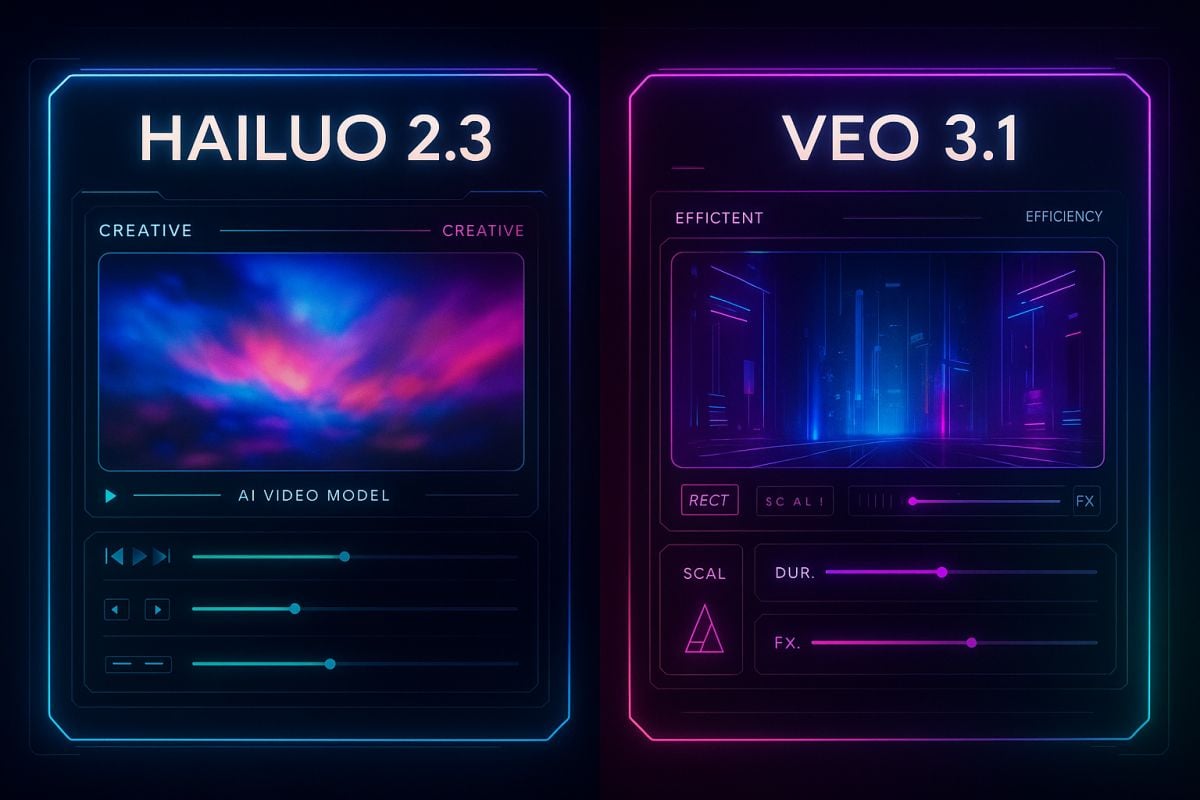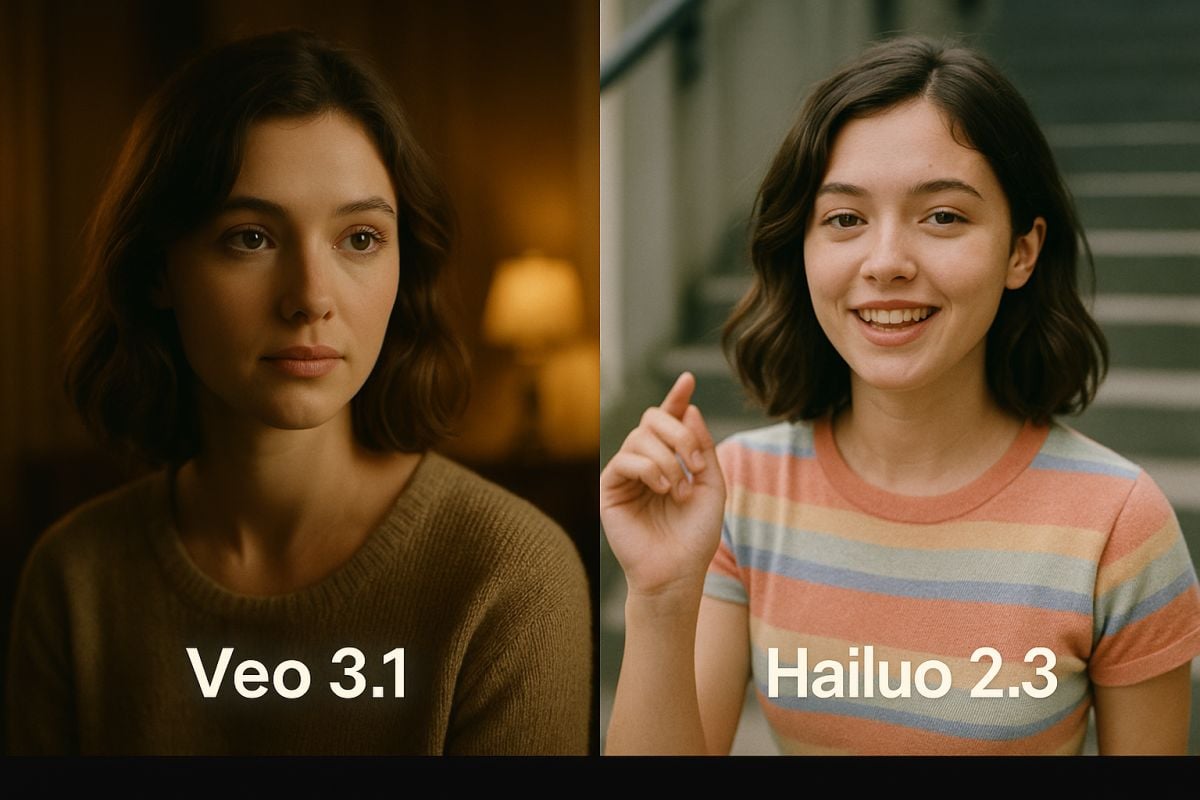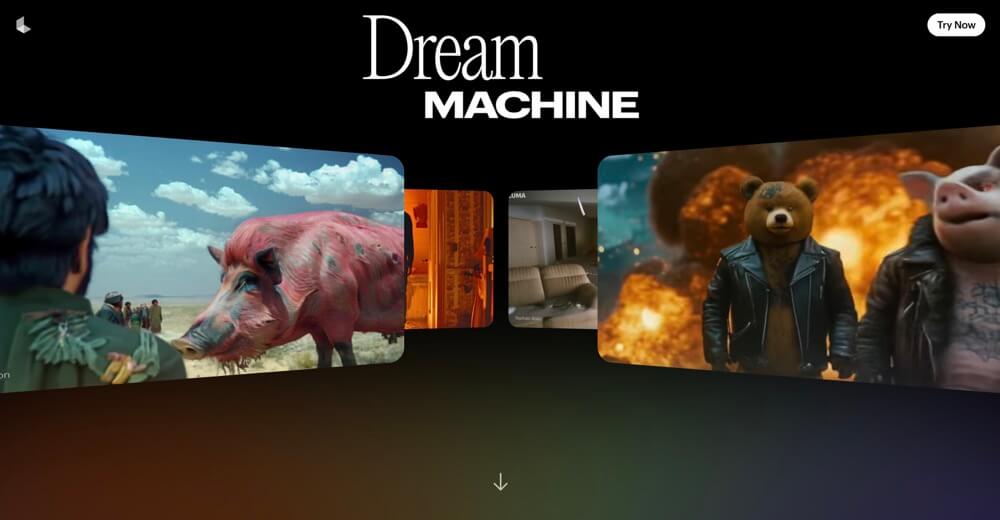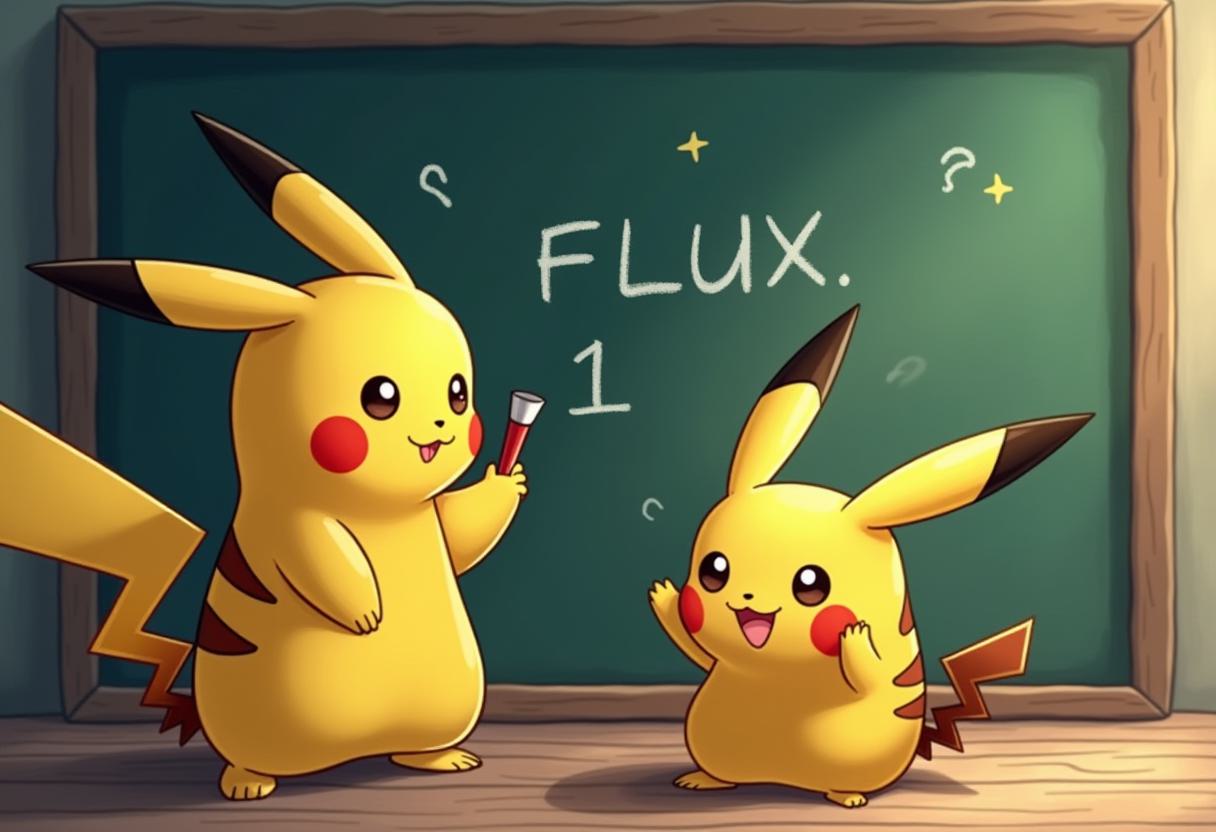Hailuo 2.3 vs Veo 3.1: Which Model Fits Your 2025 Workflow?

- 1. TL;DR Verdict
- 2. Image Quality & Realism
- Control, Consistency & Editing Latitude
- Speed, Cost & Scale
- Inputs & Typical Use Cases
- Ecosystem & Availability
- Quick Comparison
- How to Choose (Decision Tree)
- Practical Next Steps
Veo 3.1 leads on creative control and native audio realism, while Hailuo 2.3 wins on cost-effectiveness and throughput—choose based on your production priorities, not brand hype.
1. TL;DR Verdict
If you need precise narrative control, built-in sound, and premium fidelity, pick Veo 3.1; if you need to scale lots of shots cheaply and fast, pick Hailuo 2.3. Veo’s latest release emphasizes richer audio, prompt adherence, and creative tooling; Hailuo 2.3 focuses on “more for the same price” with a faster, cheaper “Fast” tier for batch generation.
2. Image Quality & Realism
Veo 3.1 edges ahead in realism and audio-synced cinematics. Google’s update highlights enhanced realism and native audio creation, with improved prompt following and expanded creative controls compared with prior Veo versions. These shifts notably help with camera grammar, lighting continuity, and on-model detail. Google blog; DeepMind model page.
Hailuo 2.3 delivers credible quality at a lower unit cost. While less marketed for native audio, MiniMax positions 2.3 as an efficiency upgrade over Hailuo 02, maintaining price while boosting output quality—useful when “good enough” visuals at scale beat “perfect” visuals at a premium. MiniMax news.

Control, Consistency & Editing Latitude
Veo 3.1 prioritizes controllability. Google’s materials emphasize finer creative control, better prompt adherence, and more precise editing handles (e.g., narrative control, camera movement, lighting presets), enabling longer and more coherent multi-beat stories than earlier Veo iterations. Source.
Hailuo 2.3 is practical for batch consistency when paired with solid prompting. It’s positioned as a workhorse for high-volume pipelines—less hand-holdy than Veo on niche controls, but very capable for repeating formats (product loops, simple b-roll, short stylized clips) where speed and price trump fine-grained direction. Source.
Speed, Cost & Scale
Hailuo 2.3 wins on cost-per-minute and throughput. MiniMax calls out a “Fast” tier that reduces batch costs by up to ~50%, making it attractive for creators and teams pushing dozens/hundreds of assets per sprint. Source.
Veo 3.1 is available in Google’s ecosystem, with tiers that trade quality, speed, and access. Veo 3.1 and 3.1 Fast are exposed via Google AI plans and Flow/Gemini surfaces; that integration can shorten tool overhead if your stack already lives in Google’s products. Gemini overview.
Inputs & Typical Use Cases
For photo-to-motion and short social bits, both models work—choose based on budget vs control. If you frequently turn single images into motion, Hailuo 2.3 is compelling for cost and speed. If you need tighter aesthetic direction, on-scene audio, and cleaner camera language, Veo 3.1 is the safer pick. For quick experiments, you can animate a picture in minutes and validate whether realism or volume matters more for your channel.
For text-to-video storytelling and ads, Veo 3.1’s tools reduce “prompt wrestling.” The latest controls and improved adherence help teams translate scripts and moodboards into consistent shots with fewer retries. Source.
Ecosystem & Availability
Veo sits inside Google’s AI ecosystem (Flow, Gemini, AI Studio), easing onboarding and sharing. That visibility, plus official documentation and ongoing model updates, makes it enterprise-friendly. AI Studio; DeepMind.
Hailuo 2.3 is widely accessible through partner platforms and APIs. Third-party gateways (e.g., fal.ai) expose 1080p image-to-video endpoints and make it easy to slot Hailuo into existing automation. fal.ai API page.
Quick Comparison
| Dimension | Veo 3.1 | Hailuo 2.3 |
|---|---|---|
| Core strength | Creative control, realism, native audio | Cost-efficiency, batch speed (“Fast” tier) |
| Typical clip lengths | Improved support vs earlier Veo releases; designed for higher fidelity and audio | Efficient short-form generation; optimized for scale |
| Best for | Narrative ads, cinematic social, brand pieces | High-volume social, UGC loops, product variations |
| Ecosystem | Google Flow/Gemini/AI Studio | Partner APIs & creator platforms |
| Budget fit | Higher for premium features | Lower cost-per-minute at scale |
Notes: Based on official announcements and product overviews as of Oct 2025; capabilities and pricing may evolve.
How to Choose (Decision Tree)
Start from your constraint—budget or control—and work backward to the model.
- My priority is volume at low cost. Go Hailuo 2.3, especially for templated campaigns or iterative social edits where “good and consistent” beats “perfect.” Reference.
- My priority is polish and direction. Go Veo 3.1 for richer audio, camera control, and fidelity—particularly for centerpiece creatives. Reference.
- I’m testing both. Prototype a few clips with your current AI video generator workflow, swap the backend per scene type, and keep the model that delivers the best CTR/retention per cost.
Practical Next Steps
Run a bake-off with your real assets, not a demo prompt. For photo inputs, try identical storyboards on both models to assess motion quality, lip/auditory sync, and edit time; for text prompts, compare retries per usable take. Log cost per finished minute and time-to-first-approved-cut. Then standardize: route narrative scenes to Veo 3.1 and scale-oriented loops to Hailuo AI where it makes sense.



